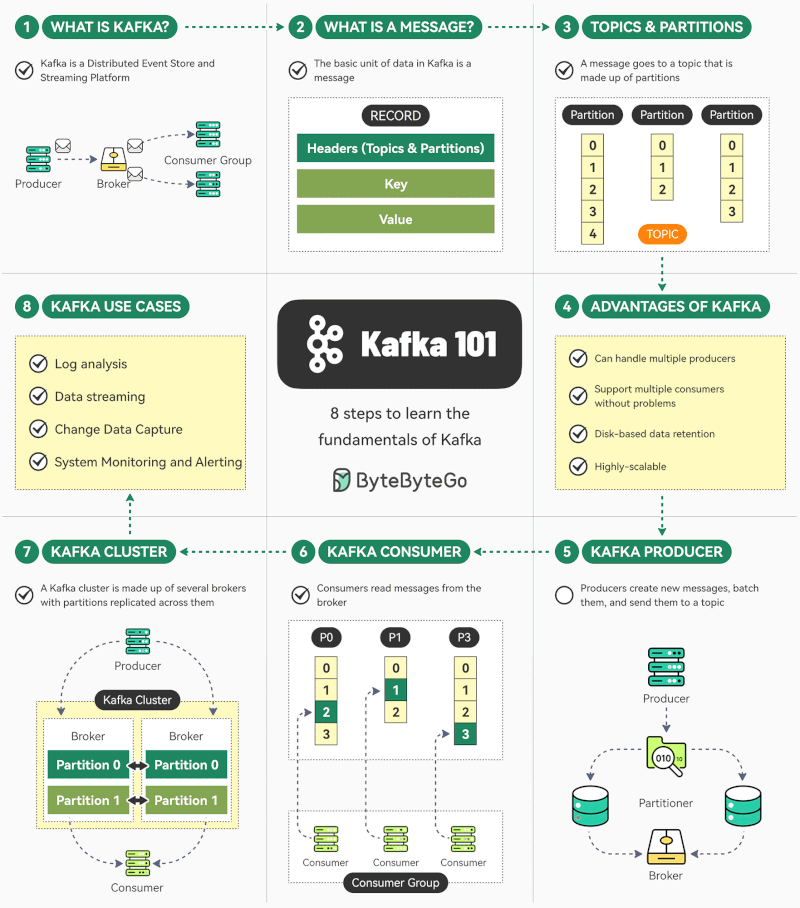
The Ultimate Kafka 101 You Cannot Miss
Kafka is super-popular but can be overwhelming in the beginning.
Here are 8 simple steps that can help you understand the fundamentals of Kafka.
1 - What is Kafka? Kafka is a distributed event store and a streaming platform. It began as an internal project at LinkedIn and now powers some of the largest data pipelines in the world in orgs like Netflix, Uber, etc.
2 - Kafka Messages Message is the basic unit of data in Kafka. It’s like a record in a table consisting of headers, key, and value.
3 - Kafka Topics and Partitions Every message goes to a particular Topic. Think of the topic as a folder on your computer. Topics also have multiple partitions.
4 - Advantages of Kafka Kafka can handle multiple producers and consumers, while providing disk-based data retention and high scalability.
5 - Kafka Producer Producers in Kafka create new messages, batch them, and send them to a Kafka topic. They also take care of balancing messages across different partitions.
6 - Kafka Consumer Kafka consumers work together as a consumer group to read messages from the broker.
7 - Kafka Cluster A Kafka cluster consists of several brokers where each partition is replicated across multiple brokers to ensure high availability and redundancy.
8 - Use Cases of Kafka Kafka can be used for log analysis, data streaming, change data capture, and system monitoring.
Over to you: What else would you add to get a better understanding of Kafka?